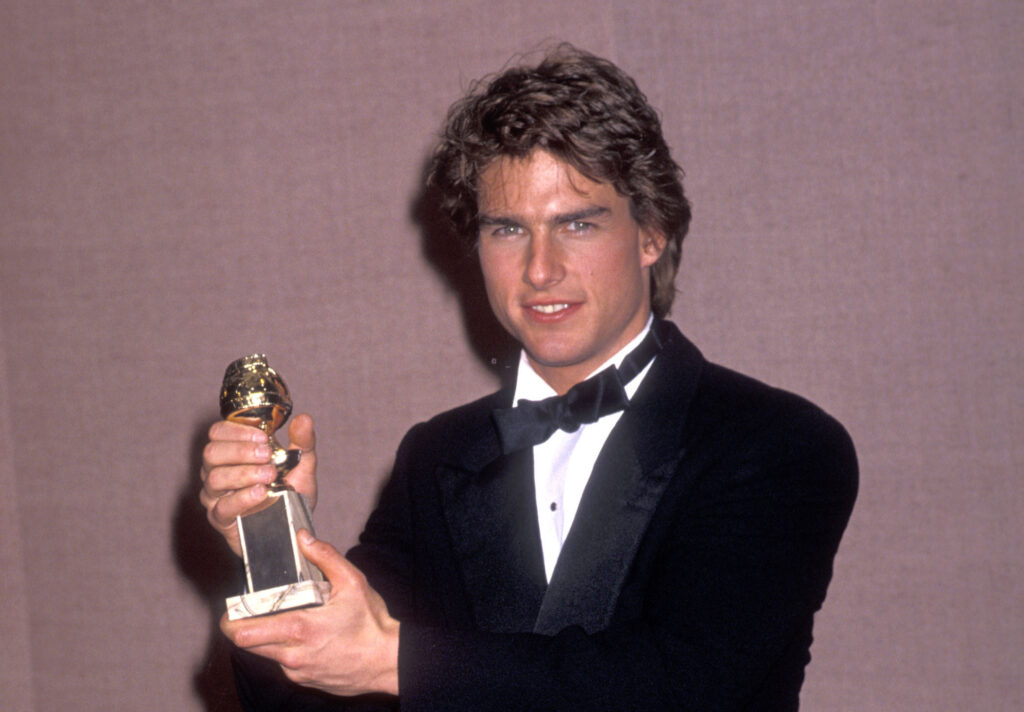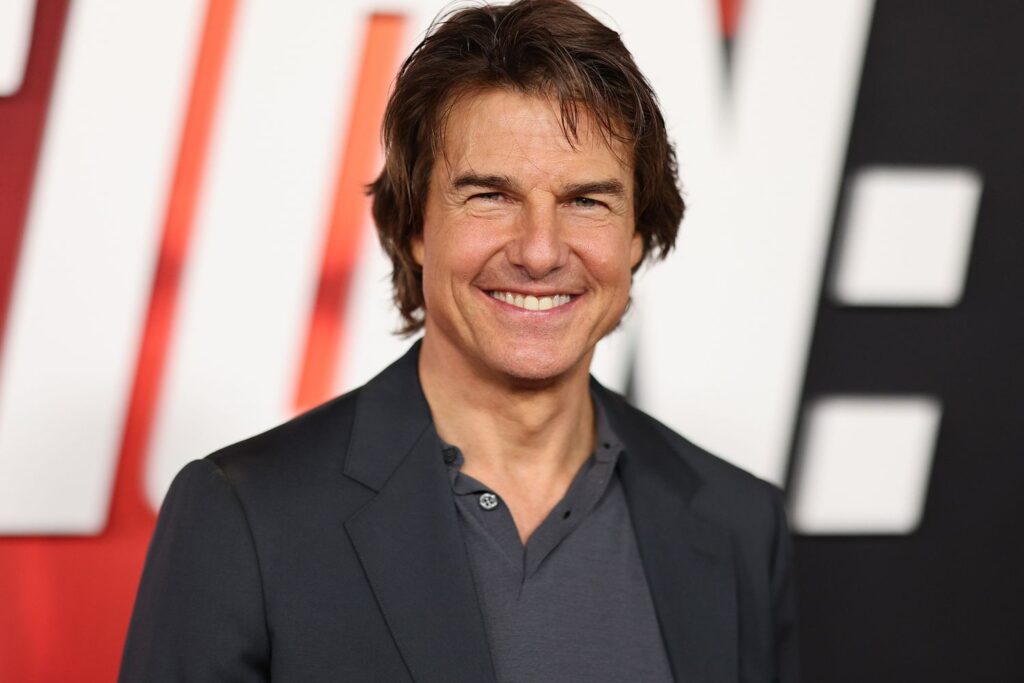
Tom Cruise. I’ve heard people describe him as the last true movie star, and I would believe it. He has the charisma and looks of previous movie stars like Steve McQueen and Paul Newman, and he has that marquee name. In a world fragmented by multiple studios and streaming services, having the name Tom Cruise associated with your project will certainly boost its profile and guarantee some success. Only a star as big as Cruise could convince Paramount to let him perform his own increasingly ambitious stunts in the Mission: Impossible films or stand his ground and convince that same studio to hold onto a blockbuster film for two years until it was safe for people to go back to theaters. Since 1981, he’s appeared in over 40 films and I’ve seen them all. Let me repeat, I’ve seen them all. From Endless Love to Mission: Impossible – Dead Reckoning, and no, it was not an easy task. Some titles are harder to find than others.

Over his forty-plus-year career, Tom Cruise has lit up the screen with heart-wrenching dramas, thrilling action adventures, a handful of comedies and even a musical. This post will discuss his entire filmography as a whole while paying extra attention to the ten films that I believe fostered his growth as both an actor and a filmmaker. Discussing a forty-year career is going to take some time. To make this post more palatable, I’ve decided to divide it into four parts. These films show the evolution of Cruise as a performer and in some cases, a producer. I also want to mention that I will not be discussing the Mission: Impossible films because that deserves a post of its own. I plan to publish the post in time for the release of the eighth installment, The Final Reckoning. As always, spoiler alerts are possible. With that out of the way, let’s get started.
I think a little background information is necessary to understand the man who would become Tom Cruise. Thomas Cruise Mapother IV was born on July 3, 1962, in Syracuse, NY. He grew up near poverty in a Catholic family. At one point, he even wanted to become a Franciscan priest. Ironic, isn’t it for someone so big into Scientology? In 1980, at the age of 18, with his family’s blessing, Cruise moved to New York City to pursue an acting career. He signed with CAA and began acting in films.
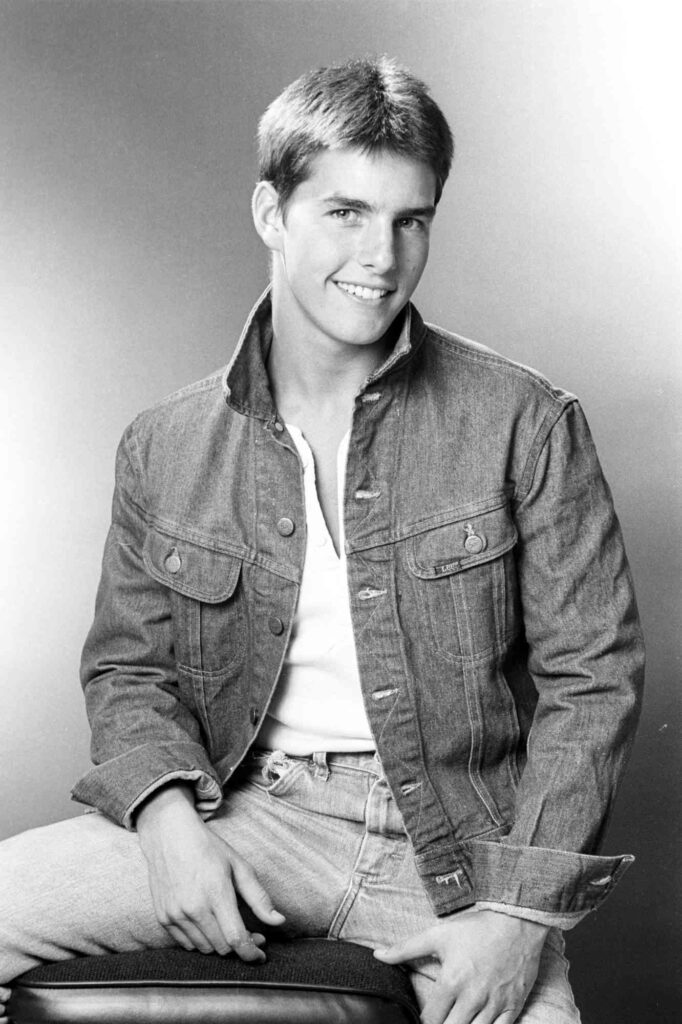
His big screen debut was as “Billy” in Franco Zeffirelli’s adaptation of the novel Endless Love. To prove my dedication to this blog, I sat through 116 minutes of this movie just to see Cruise on screen for two minutes. Billy, in all his jean-short glory, plays a pivotal role. He inspires the lead character to commit arson and to put out the fire to impress his girlfriend’s family. That should tell you all you need to know about the movie. Arson aside, watching this film was incredibly uncomfortable for me. I can only watch the movie through the lens of the 2020s. I can’t tune out all of the uncomfortable scenes that were more socially acceptable in 1981. The sexualization of Brooke Shields, who was only sixteen when the film was released, is the most concerning to me. When submitted to the ratings board, it was initially rated X (this is before the NC-17) and Zefferelli had to tone down some of the sex scenes to get that R rating. This is even more concerning given that the lead actor, Martin Hewitt, was seven years older than Shields when filming these intimate scenes. I mean, it is Franco Zefferelli at the helm, so this doesn’t shock me entirely. His 1968 adaptation of Romeo and Juliet came under fire in 2023 when stars Leonard Whiting and Olivia Hussey sued Paramount Pictures, saying that Zeffirelli coerced both actors (minors at the time) to pose nude. Ironically enough, the film was rated G upon release and I remember watching the film (along with Baz Luhrman’s adaptation) in ninth grade after reading the play.
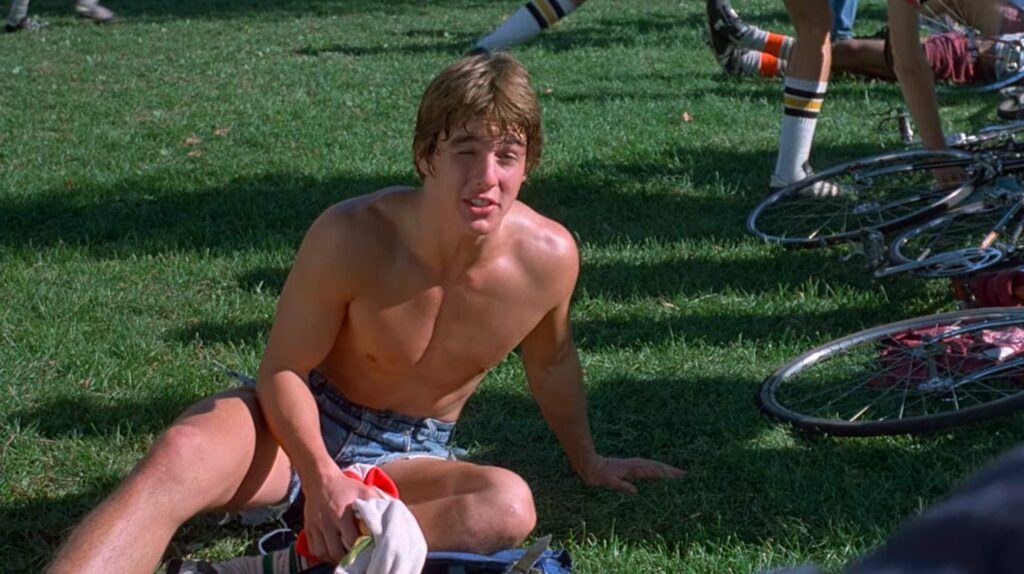
Also in 1981, he appeared with George C. Scott and Timothy Hutton in a major supporting role in Taps. Originally cast in a minor role, Cruise impressed director Harold Becker so much that he was bumped up to the supporting role of Captain Cadet David Shawn. Essentially the film Red Dawn but in a military school (the film predates Red Dawn), the film follows a group of military students led by Moreland (Hutton), who take over their school to prevent it from being unjustly closed. Moreland has two people in his ear, the gun-obsessed Sean, and the logical Dwyer, played by Sean Penn (in his film debut). Though he is not the main character, Cruise was undoubtedly the scene stealer and he earned positive notices. This is by far my favorite of the pre-Risky Business films Cruise appeared in.
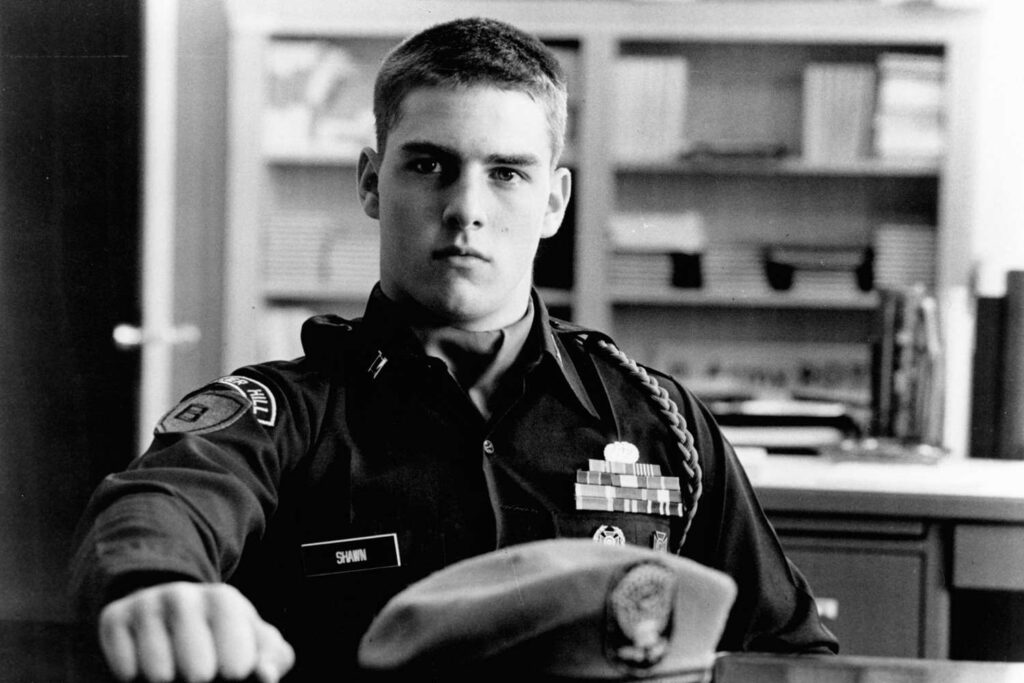
The year 1983 would be a huge one for Cruise. First up was Francis Ford Coppola’s adaptation of The Outsiders. Playing against future stars like Matt Dillon, Rob Lowe, Emilio Estevez, C. Thomas Howell, Ralph Maccio, and Diane Lane, Cruise starred as Steve Randel. A much smaller part, ChatGPT estimates that he has only eight minutes of screen time in the film’s 113-minute run time. I should specify that the version I watched was Coppola’s 2005 extended re-cut instead of the 91-minute theatrical release. Regardless, Cruise’s screen time remains the same. I’ll be honest, the film bored me at times. I think if I had read the book when I was young and had that connection, I would have appreciated it more.
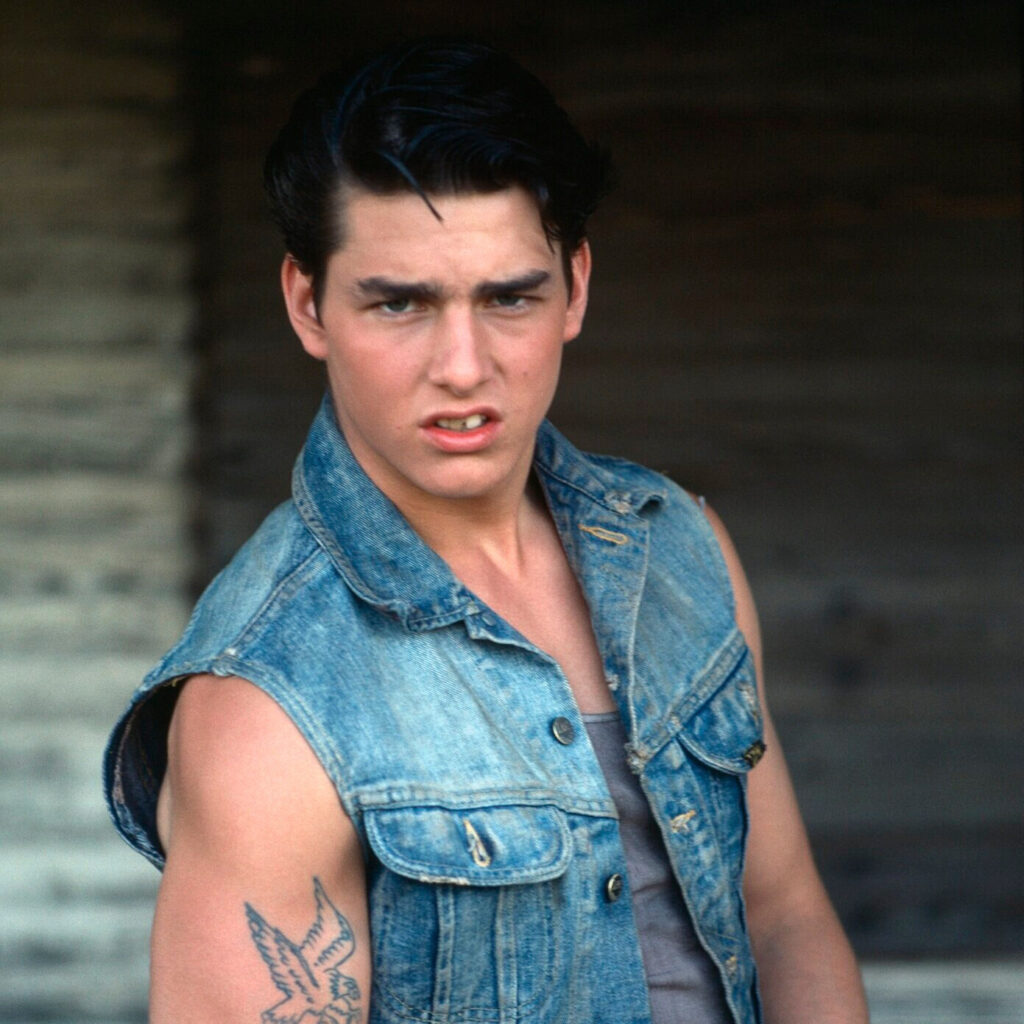
His second film of 1983 was the teen sex comedy Losin’ It. Tom Cruise plays one of three teens (the others are played by Jackie Earle Haley and John Stockwell) who drive to Mexico one weekend in an attempt to lose their virginity. Along the way, they pick up an older woman seeking a quick divorce (played by pre-Cheers Shelley Long). They get to Mexico and of course, hijinks ensue. Released in response to the studio’s desire for cheap teen sex comedies on the heels of Porky’s, this film is nearly unwatchable. I understand a young actor taking roles for the money and exposure, but forty years later, I’m sure this is one Tom Cruise wants to forget. Funnily enough, the film is directed by Curtis Hanson, who would go on to direct films like The River Wild, 8 Mile, and Wonder Boys and win an Oscar for writing L.A. Confidential.
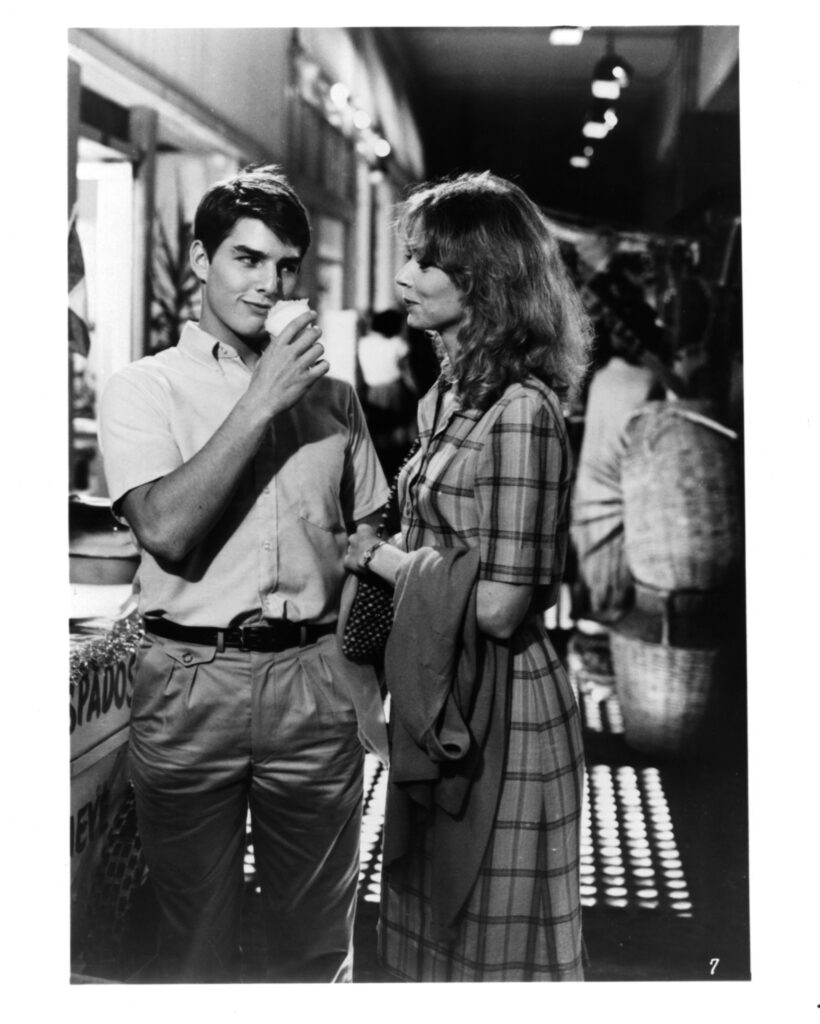
While Mapother adopted his stage name as soon as he started acting in films, one can make the argument that the idea of “Tom Cruise” didn’t start to emerge until our next film, Risky Business. Before this film, the roles he played were either small supporting parts or small parts within a larger ensemble. With Risky Business, however, the persona of “Tom Cruise” was starting to emerge. This leads us to movie number one.
Movie #1: Risky Business
A coming-of-age film, Risky Business follows the sexual exploits of high school senior Joel Goodsen (Cruise), who is staying home alone during his parents’ vacation trip and becomes involved with a call girl named Lana (Rebecca De Mornay). With its clever and heartfelt script, the film was a huge hit, grossing $63.5 million on a $6.5 million budget. Despite this being his fifth film, this was his breakout role. If you were in the movie theater in 1983, you knew you were watching a star in the making when Cruise slid down the wood floor in an oversized shirt and tighty whities while dancing to Bob Seger’s “Old Time Rock N’ Roll.”
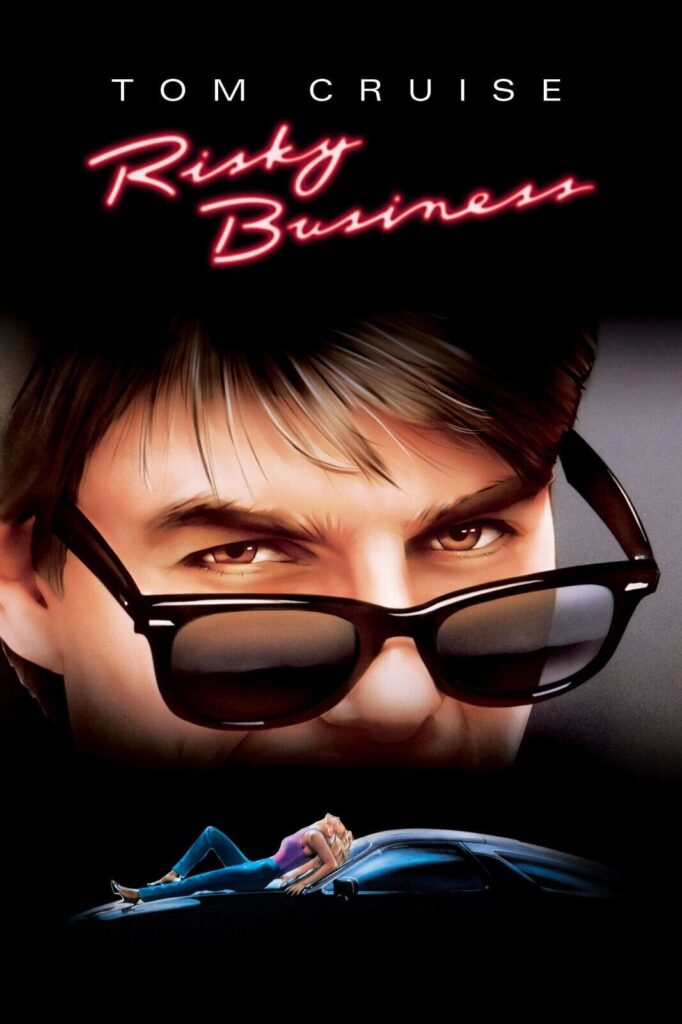
While you couldn’t imagine anyone else, except Cruise, in the main role, it almost didn’t happen. The film itself almost didn’t happen. Writer/director Paul Brickman had a deal with Warner Bros. to write and direct the feature. However, it was placed into turnaround once Brickman turned in his final script. Allegedly, the studio didn’t think the film was funny enough and didn’t bear any resemblance to the sex comedies Porky’s inspired. Producer Jon Avnet was surprised that no studio wanted it. After all, he described the script as being “funny, smart, and sensual.” Those execs who didn’t mind the film not being a Porky’s rip-off had trouble with the idea of a prostitute as one of the main characters. Films featuring brothels like The Best Little Whorehouse in Texas and Night Shift underperformed. Mega mogul music producer turned film producer David Geffen loved the script and purchased the rights. His only request was to raise Lana’s age from 16 to 21. Brickman agreed and Geffen greenlit the film. Ironically, Geffen Films had a distribution deal with Warner Bros., bringing the film full circle.
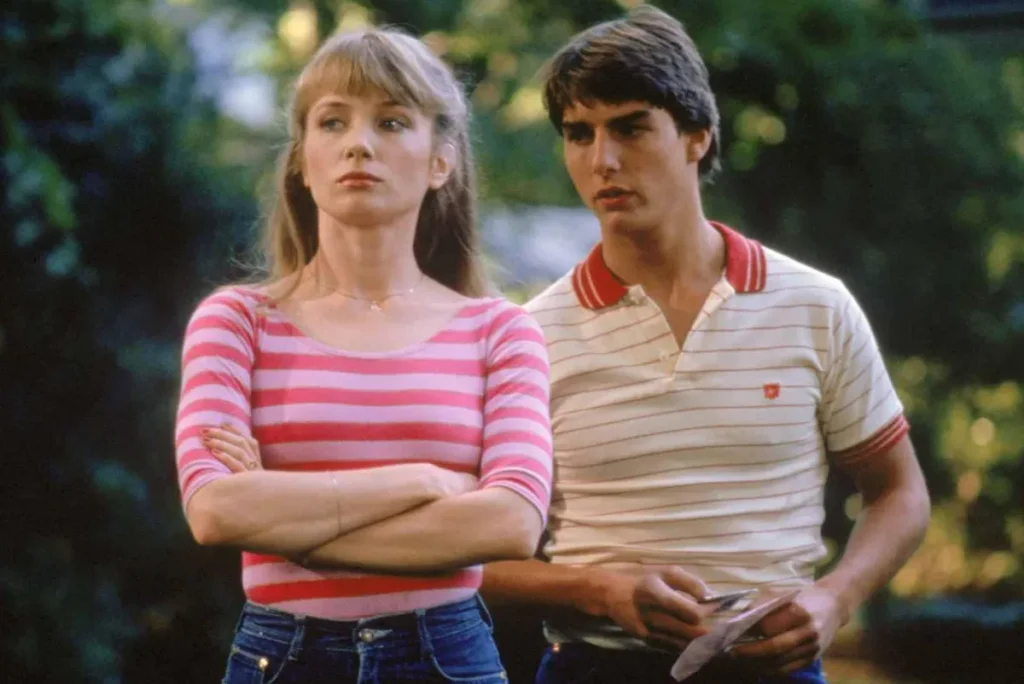
Many Hollywood A-listers auditioned for Joel’s part, though none ended up being cast, including Kevin Bacon, Sean Penn, Gary Sinise, and John Cusack. Having only seen Cruise in Taps, Brickman believed that Cruise was wrong for the part. The producers remained convinced and arranged a screen test. Cruise came into the studio, hair slicked back and a jagged tooth. He was shooting The Outsiders and used his lunch break to test for the role. Despite looking nothing like Joel, Cruise aced the audition, leaving the producers scrambling to cast the role of Lana. Hot off of Grease 2, Michelle Pfeiffer was offered the role but turned it down. Rebecca De Mornay was found by the casting director who saw something in her. The first read wasn’t great, so the director worked with De Mornay for two days before she read in front of the director and producers. They liked her so much that they set up a chemistry test with Cruise and De Mornay. Though they only had 90 minutes to shoot the test due to Cruise’s tight schedule, the chemistry was there and the two leads were cast.
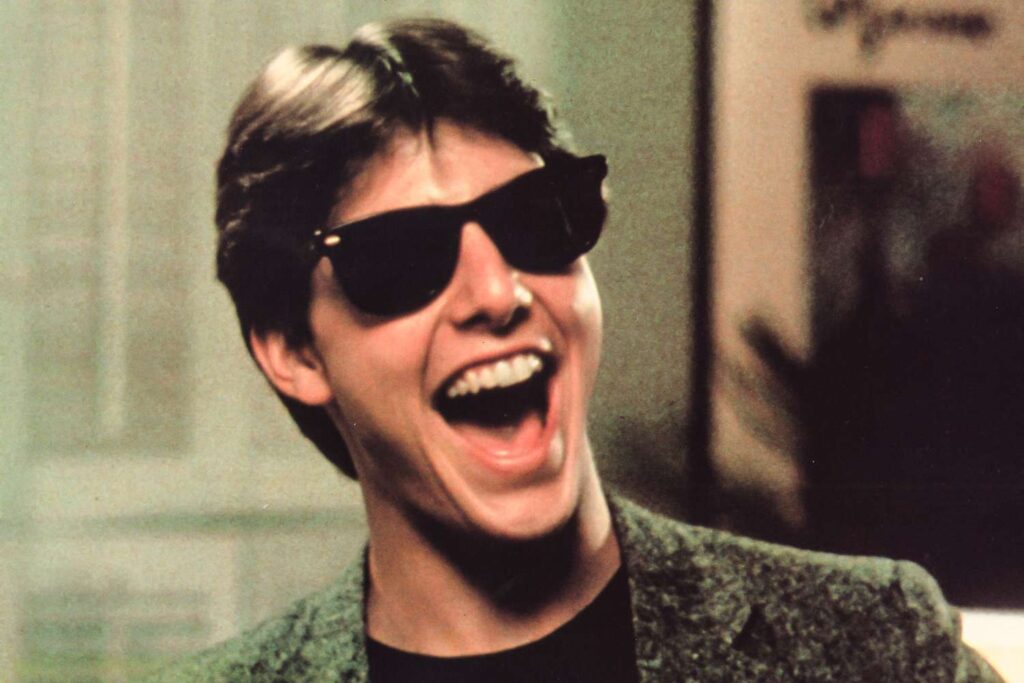
Filming went well and so did post-production, until it came to the ending. Brickman wanted a more realistic, stark ending where Joel didn’t get the girl. Geffen didn’t like the ending and neither did test screenings. Against Brickman’s objections, an alternate ending was shot where Joel does get the girl. This was the one used in the final cut. By the time the film was released, the relationship between Brickman and Geffen was so bad that they didn’t have a premiere, not even one for the cast and crew. Eventually, the Criterion Collection would release Brickman’s director’s cut in 1984.

Though a bit darker, Risky would serve as the answer to the John Hughes teen movies that would become popular over the decade. Lighter and at times more fun, Hughes’ movies explored a different side of what it meant to be a teen in the 80s. Hughes would have a prolific career until his untimely death, but the process of making Risky was so difficult for Brickman, that he only directed one other film, titled Men Don’t Leave. De Mornay would remain a presence in Hollywood for many years, and Cruise, I think it is safe to say he has done well for himself.
The reason I keep saying “Tom Cruise” was just starting to emerge after Risky Business is because this actor isn’t fully “Tom Cruise” yet. A reason for this is because his first two films post-Risky weren’t exactly winners. In the subpar teen sports drama All the Right Moves, the actor plays a high school defensive back who desperately seeks a football scholarship to make it out of a dying mill town. In Ridley Scott’s dark fantasy, the actor plays Jack, a pure being, who must stop the Lord of Darkness who plots to cover the world with eternal night. That was a weird movie. I already have a bias against most fantasy films, but this one just seemed nonsensical to me. I had to fight every urge to turn off the movie part way through. The one kudos I will give the film is to the makeup artists. The process and prosthetics used on Tim Curry were particularly impressive. Unsurprisingly, Cruise disowned the film and refused to talk about it for many years afterward.
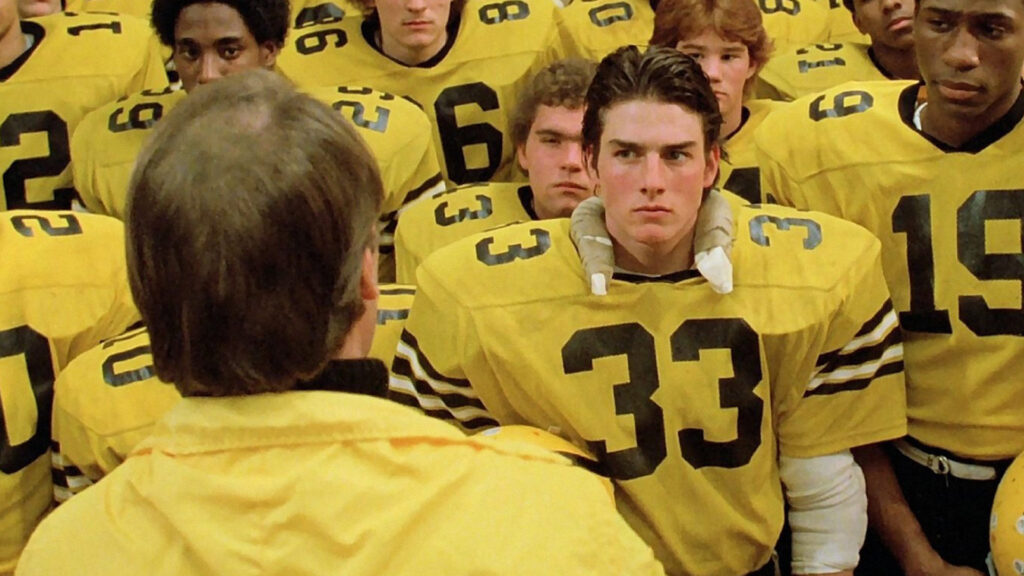
One could make an argument that these two films are a step backward in his budding career. However, one can’t blame him entirely. All the Right Moves was shot well before the release of Risky and the idea of working with Ridley Scott must be appealing to a young, hungry actor. Legend was a critical and commercial failure. I can’t possibly fathom what was going on in Cruise’s mind, but he was only 22 when the film was shot. I imagine he was still trying to find himself as an actor, a public figure, and a person. I mean, how many of us truly know ourselves at 22? The idea of Tom Cruise becomes solidified with the release of his next film. Negative buzz did lead Cruise to reevaluate the direction his career was heading. This leads us to the film that broke the sound barrier: Top Gun.
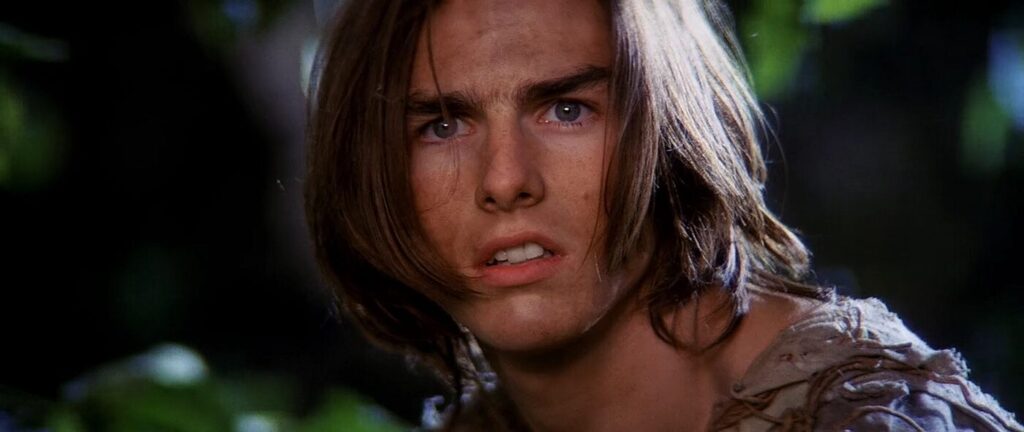
Movie #2: Top Gun
We have finally reached the film where Tom Cruise becomes Tom Cruise. Cruise stars as Lt. Pete “Maverick” Mitchell, a young, immature naval aviator, who along with his partner, Goose Bradshaw, are sent to train at the United States Navy’s Fighter Weapons School (Top Gun). The film got its start after an article titled “Top Guns” appeared in California Magazine in 1983. Producers Don Simpson and Jerry Bruckheimer hired Jim Cash and Jack Epps Jr. to write the screenplay. Simpson and Bruckheimer took the script to Paramount, where they had a production deal and hired Tony Scott to direct. Matthew Modine was the first choice to play Maverick but opted to star in Stanley Kubrick’s Full Metal Jacket. Others like Emilio Estevez, Sean Penn, and Patrick Swayze were considered for the part before Cruise accepted the role. He was offered the role while filming Legend. Ironically, he was reluctant to take the role, but the film’s director Ridley Scott (brother of Tony), convinced him to take the role.
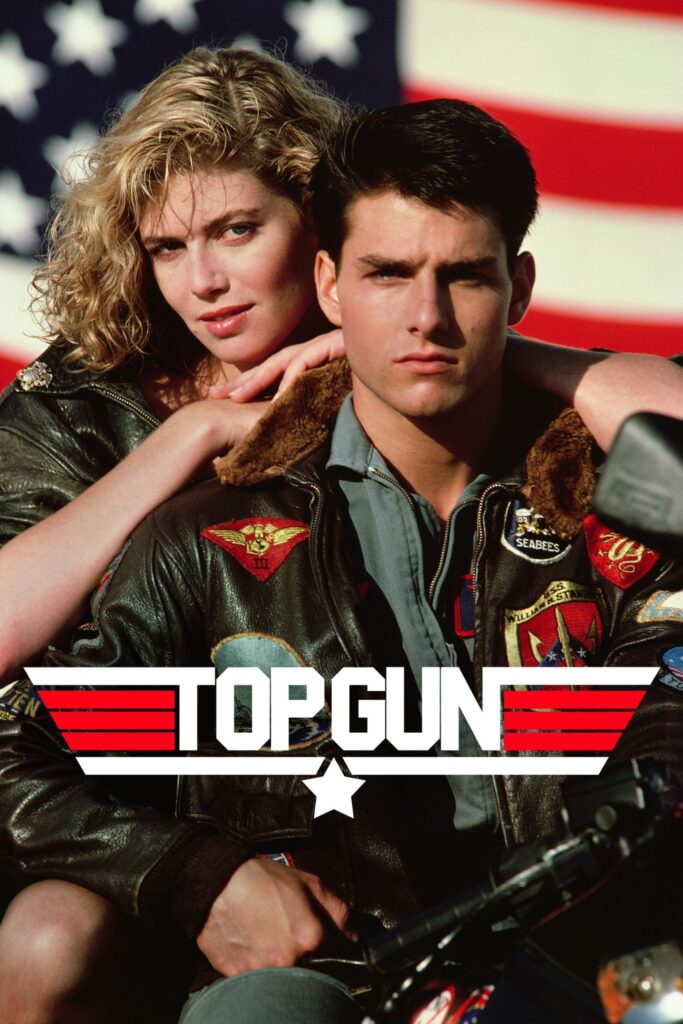
The cast was rounded out with Kelly McGillis as Charlie, Anthony Edwards as Goose, Tom Skerritt as Viper, and Val Kilmer as Tom “Iceman” Kazanzky. Interestingly enough, Kilmer did not want to play Iceman because he disliked the script, but was forced to play the role as he was under contract with the studio. Wanting the film to be as authentic as possible, the studio enlisted the U.S. Navy for assistance in the production of the film. This led to script adjustments to make sure the film was as authentic to life in the Navy as possible and tightening the Navy jargon. Much to Cruise’s chagrin, the Navy provided actual pilots to do their flying. Regardless, the flying scenes in the film were groundbreaking for their time, achieved through a combination of real aerial footage and carefully coordinated cinematography. The Navy’s involvement was crucial in creating the film’s iconic flight sequences.

Released in May 1986, the film was a smash hit, despite mixed reviews. The film’s aerial footage, sound editing, and soundtrack received most of the acclaim. At the 1987 Academy Awards, the film was nominated in four categories including Sound, Sound Effects Editing, Film Editing, and winning Best Original Song for Berlin’s “Take My Breath Away.” The film grossed $357 million on a budget of $15 million and was the highest-grossing film of the year both worldwide and domestically. I’ll admit, I’m not a fan of this film. I think the sequel is infinitely better (we’ll get to that eventually). I think the story is lackluster and I don’t think the visuals are that impressive. Now, I will admit, I think my opinion is informed by the era I grew up in. I was born 12 years after this film. It was an important part of popular culture and had I grown up with the film, I believe I would have liked it more. To me, it just seemed like cheesy, mindless, 80s Cold War propaganda, but that’s just my opinion. I’ve said it before, but this was the movie that solidified Tom Cruise as a movie star for the ages.
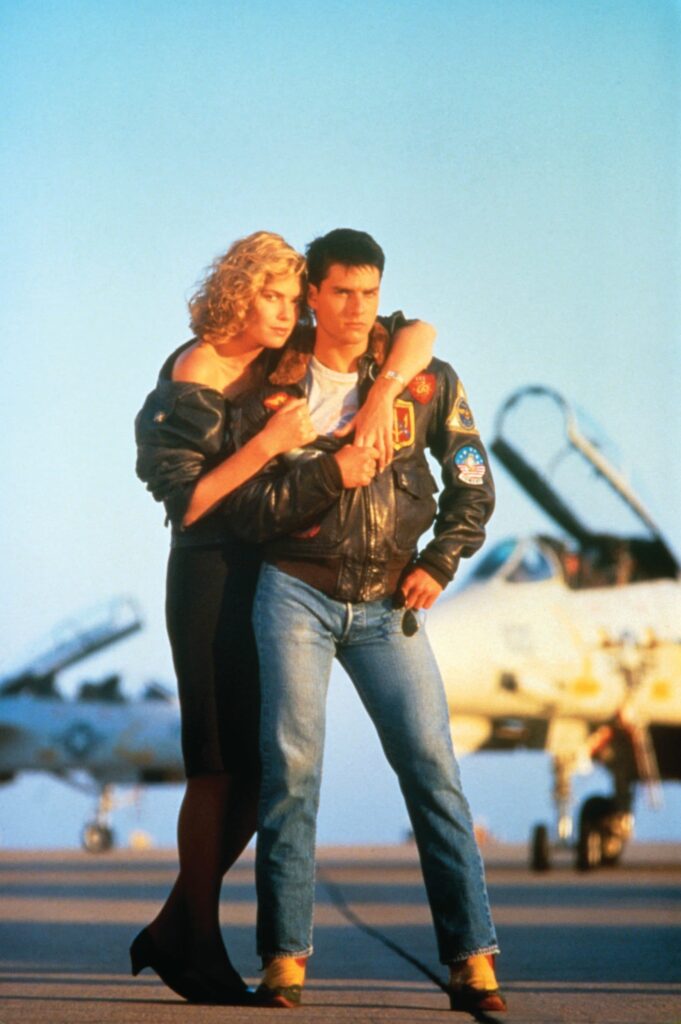
That same year also saw him take on another integral part in Martin Scorsese’s The Color of Money.
Movie #3: The Color of Money
We’ve reached the first film on our list where Cruise would work with established actors and directors to help better the craft of acting. The first film to do this is Martin Scorsese’s The Color of Money. A sequel to The Hustler, Cruise acts alongside Paul Newman as he returns to his iconic role as Fast Eddie Felson. The film follows Felson, Vincent (Cruise), and his girlfriend, Carmen (Mary Elizabeth Mastrantonio) as they hustle pool halls and make their way to a Nine Ball tournament in Atlantic City.
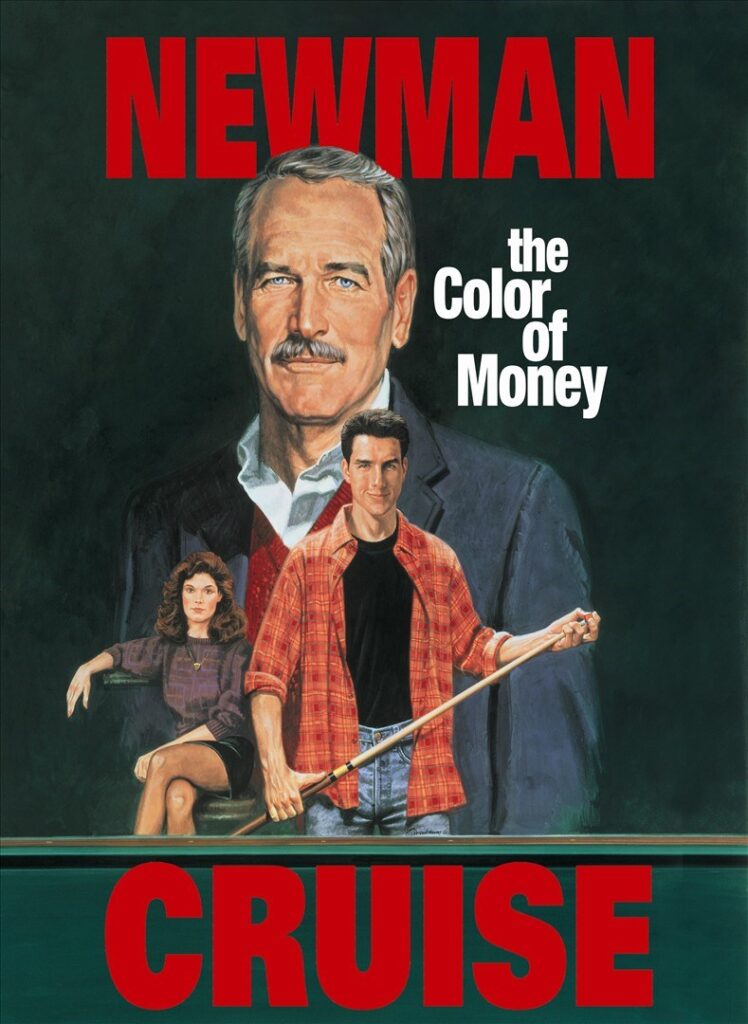
The sequel came about when the original novelist, Walter Tevis, wrote a sequel 25 years after the release of The Hustler. Released in 1984, he died the same day producer Irving Axelrod received the novel in galley form. Paul Newman was attached to the jump and brought Scorsese on to direct. Both Columbia Pictures and 20th Century Fox (the original film’s distributor) declined the project and it ended up at Disney’s Touchstone Pictures. When screenwriter Richard Price adapted the novel, he took out most of the returning characters, so the film could stand alone with only Newman returning from the first film. Newman had wanted Jackie Gleason to reprise his role of “Minnesota Fats,” but Price could not find a way to fit him into the story organically. When Gleason did read a draft that included Fats, he turned down the film, feeling like the character was an afterthought.
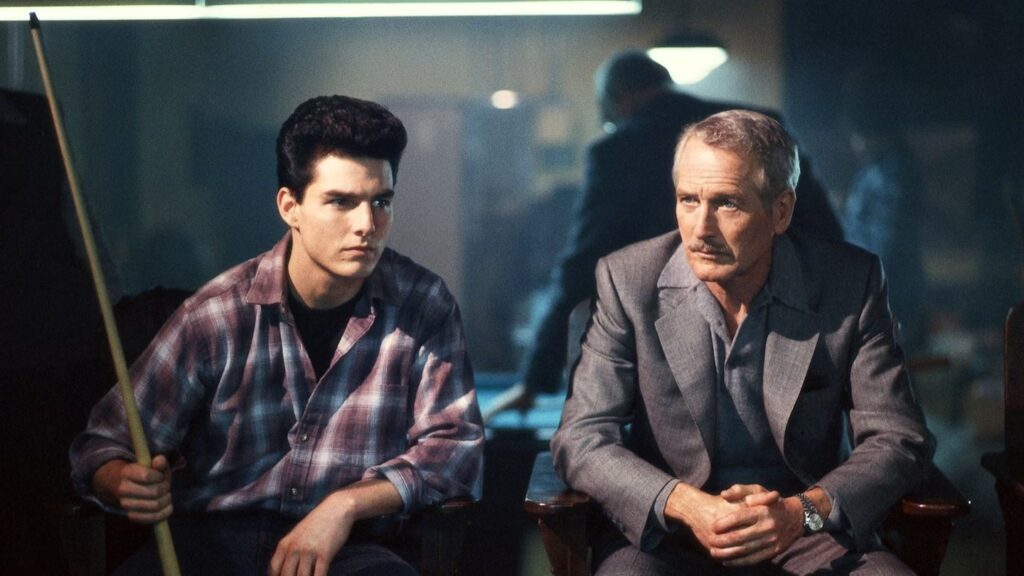
Cruise was cast after Scorsese wanted a dynamic young actor to compliment Newman’s calm and mature presence. Long before Cruise was doing his stunts in Mission: Impossible, he took preparing for his roles seriously. In preparation to play Vincent, Cruise learned how to perform his trick shots. Only one of Cruise’s trick shots, a jump shot over two balls to pot another, was performed by a professional. Scorsese had confidence Cruise could learn how to perform the shot but felt it would take too long.
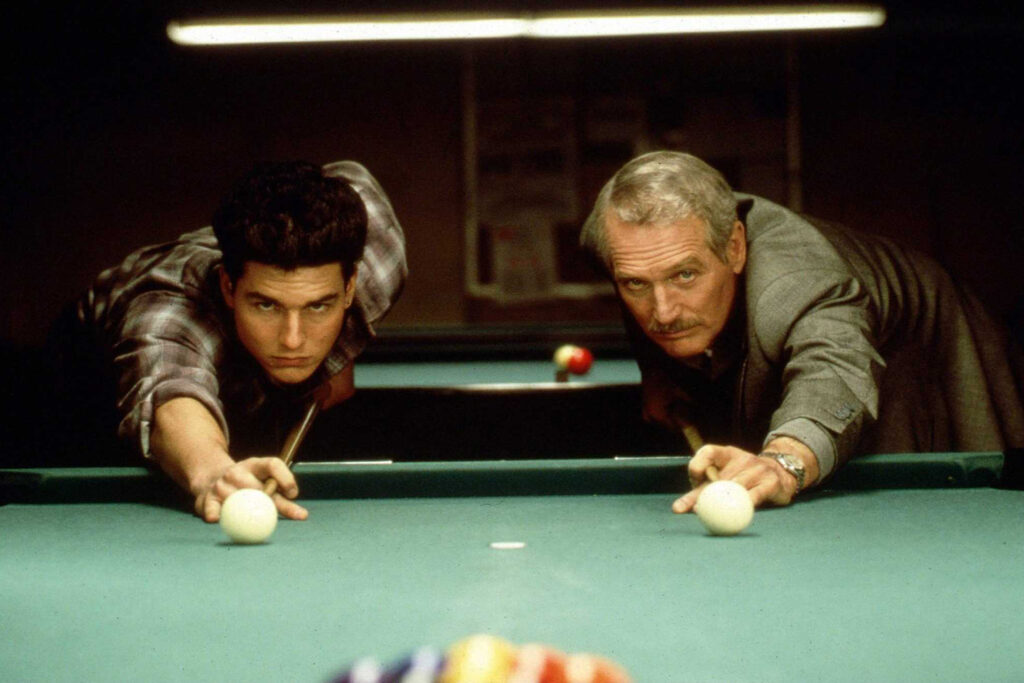
The film was released in October 1986 to positive reviews, though it was deemed inferior to its predecessor. In a sign of things to come, Cruise watched from the sidelines as co-stars Newman and Mastrantonio were nominated for Academy Awards. This film marks the only win in Paul Newman’s illustrious career and he wasn’t even there to accept it in person. This performance not only solidified Cruise’s place as a Hollywood icon, but it demonstrated he could hold his own against veteran actors. Cruise had to partner with one more veteran actor in a drama before he got his chance to shine.
His two films of 1988 continued a trend he set in 1986, appearing in a “popcorn” flick and a film by a notable director. The first film of 1988 was Cocktail. Based on the 1984 novel, the film follows Brian, an economics student who learns the skill of bartending to make ends meet. His skills take him to Jamaica, where he works at a beachside bar. The rest of the plot is pretty simple. Brian meets Jordan, a young American. They fall in love, he blows it, and now he must return to the United States to win her back. Nothing special there. The film was savaged by critics, with only 9% on Rotten Tomatoes. It even won the Razzie Award for Worst Picture. Despite the critical beating it took, the film was a box office success, grossing $171 million on a $20 million budget. I mean, was it worse than the fellow nominees for worst picture that year (Mac and Me, Caddyshack II, Hot to Trot, and Rambo III)? I don’t think so. Paul Rudd didn’t have a twenty-year running gag on Conan where he would introduce his new film and show a clip from Cocktail.

I think Cocktail’s reputation has improved over time. It is nowhere near Cruise’s best film, but it’s nowhere near the worst film ever made. I believe this is due in part to different reasons. The first is that Tom Cruise still has that same star power thirty years on. The second is a blend of nostalgia and flair. The scenery is beautiful and the bar tricks are impressive. I think that adds to the maintained appeal. I think it helps to look at it with the mindset of “so bad it’s good.” When I watched it, I felt that it was incredibly cheesy, but I thought it was an enjoyable watch. Plus, I didn’t realize this until I did my research. “Kokomo” by The Beach Boys was written directly for this film. So, at least we have that to be thankful for. If Top Gun launched Cruise’s career into the stratosphere, then Cocktail solidified his stardom.
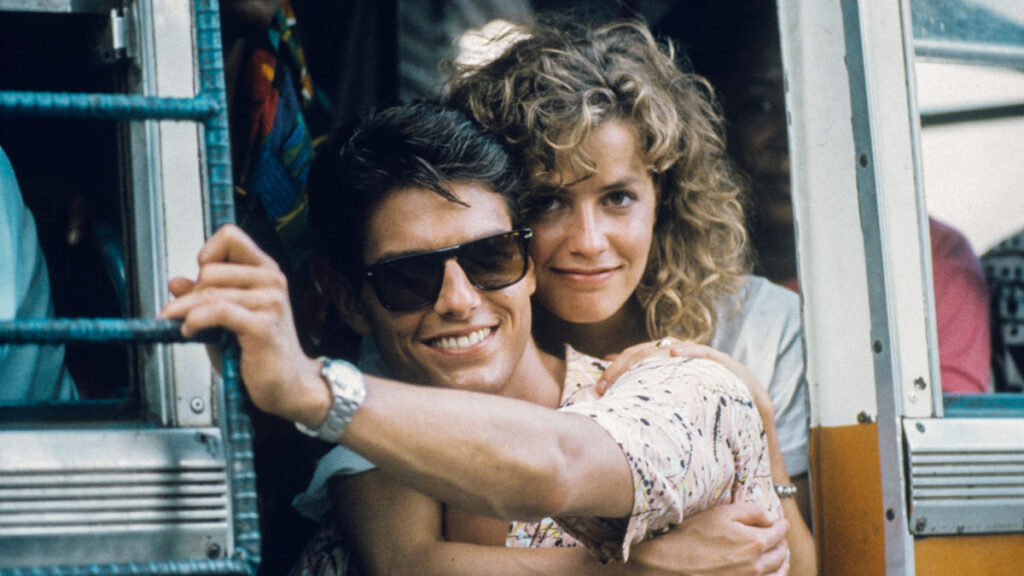
Movie #4: Rain Man
While his first film of 1988 was critically derided, his second film of the year was heaped with praise. Rain Man follows the selfish Charlie Babbitt (Cruise), who discovers he has an older autistic savant brother, Raymond (Dustin Hoffman), that he is unaware of. Together, they go on a life-changing road trip to California. Directed by Barry Levinson, the film was a smash hit that took home four Academy Awards, including Best Picture. However, the film could have been very different.

Initially greenlit in the early 1980s, the film went through numerous changes. At one point, the Quaid brothers were set to star with Randy as Raymond and Dennis as Charlie. Creative Arts Agency sent the script to both Dustin Hoffman and Bill Murray, envisioning Murray in the title role and Hoffman in the role of Charlie. That didn’t happen. Hoffman took over the title role of Raymond, while actors like Mickey Rourke and Mel Gibson were considered for the role of Charlie before Tom Cruise was cast. Searching for a director was no easy feat either. At different points in production, Martin Brest, Sydney Pollack, and Steven Spielberg were attached as directors. Spielberg was attached the longest before he dropped out to make Indiana Jones and the Last Crusade. Finally, Barry Levinson took the helm of the film.
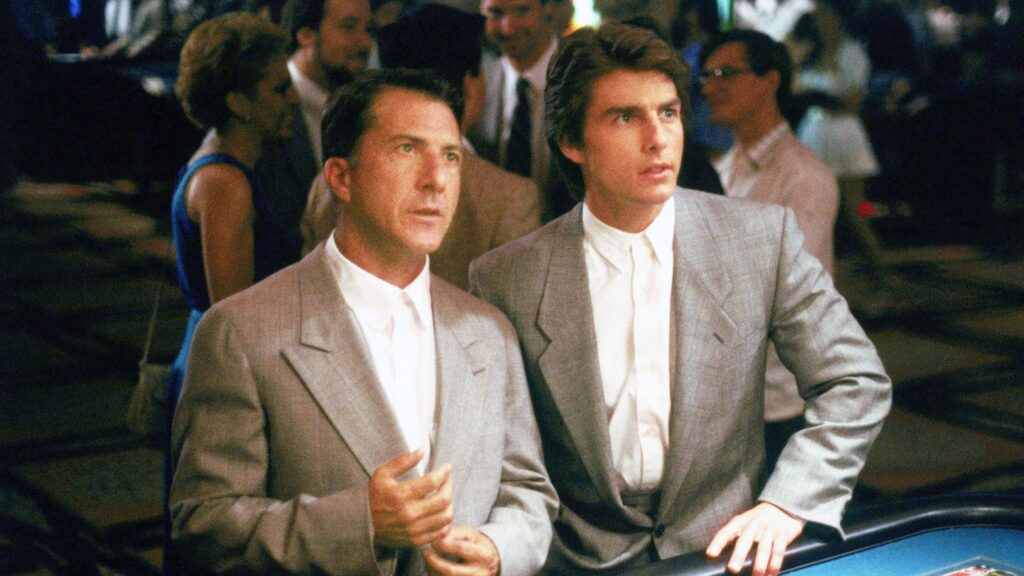
Cruise and Hoffman, who prepared for his role for over a year, were uncertain of the film’s quality as they shot it. They would often refer to the film as “two schmucks in a car.” The two had no reason to worry, as the film was a huge critical and commercial success. The film earned four Oscars including Best Picture, Director, and Original Screenplay. Once again, Cruise would have to sit on the sidelines as his co-star took home the Best Actor prize. Hoffman’s win, I believe, is well deserved. He transforms into Raymond. However, I believe Tom Cruise gives a better performance. Hoffman’s role is showy, but Cruise’s role isn’t. Charlie is the character who changes. Raymond does change a little bit, only in that he becomes comfortable with Charlie. It’s Charlie who goes from a selfish, borderline, unlikable character, to a loving brother who’s realized the error of his ways. As good as Hoffman is as Raymond, the film simply wouldn’t have worked without Cruise as Charlie. No matter. This would be the last dramatic film where Cruise would play second fiddle to a bigger star. Going forward, he was the star.
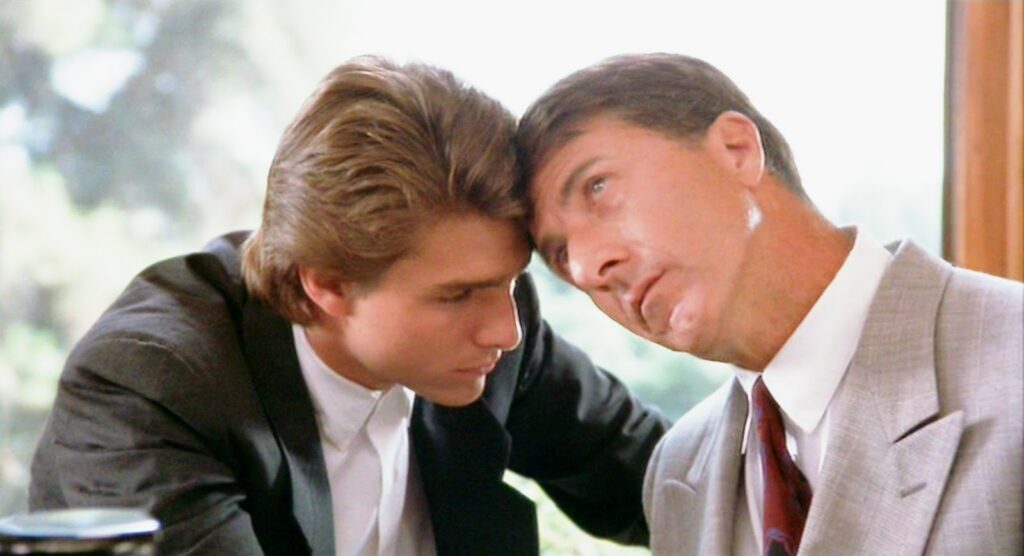
Movie #5: Born on the Fourth of July
While I have chosen ten of Cruise’s films to discuss, if I had to choose only one, there’s a strong possibility it would be this one. This is the film that proves Tom Cruise is not just a superstar, but a genuine actor. Not only that, but he can also lead a drama film. He’s not riding on the coattails of Paul Newman or Dustin Hoffman. This time, he’s the whole package. In the film, Cruise plays the real-life Ron Kovic for over twenty years, starting with his childhood, enlistment into Vietnam, his paralysis, and eventual opposition to the war.
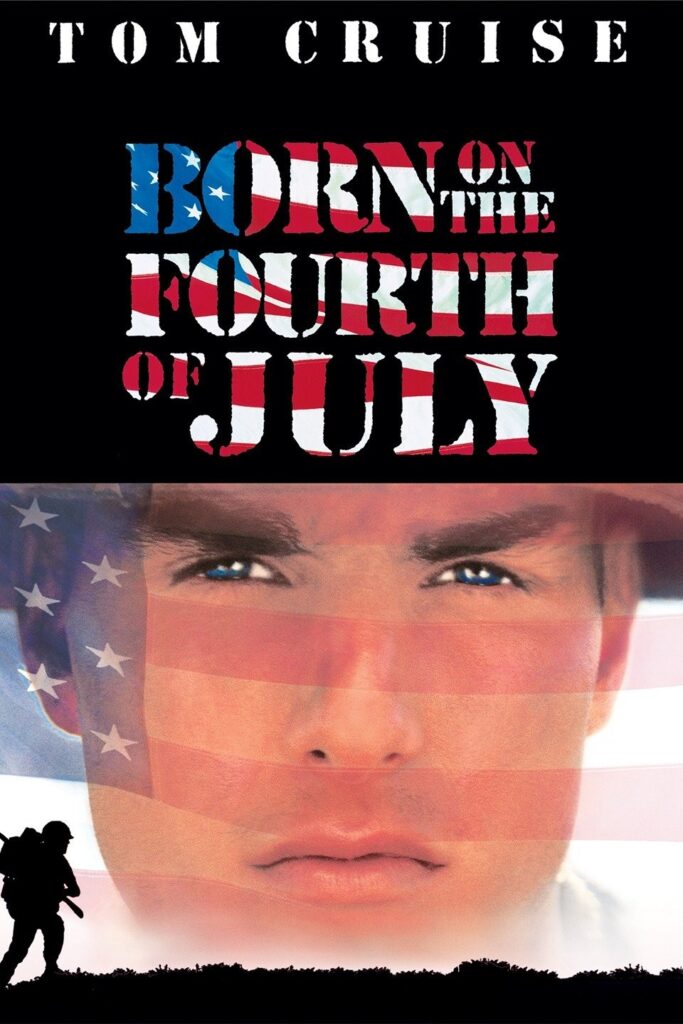
Development of the film started as far back as 1976 when Al Pacino saw Kovic’s televised appearance at the 1976 Democratic National Convention. After reading his autobiography, Pacino’s agent/producer, Martin Bregman, purchased the rights. The film was initially set up with Paramount Pictures, but they dropped the film after they were dissatisfied with the initial script. Bregman then hired Oliver Stone, a Vietnam veteran, to write the screenplay. Stone had been trying to get one of his scripts, Platoon, off the ground. Stone and Kovic bonded over their days in the services and started over together, co-writing the script. As the project lingered in development, many came and went, including studios United Artists and Orion, directors William Friedkin and Daniel Petrie, and finally Pacino and Bregman themselves. Bregman thought the film would be impossible to make given the recent success of Hal Ashby’s Coming Home. The only constants that remained over the years were Stone and Kovic.
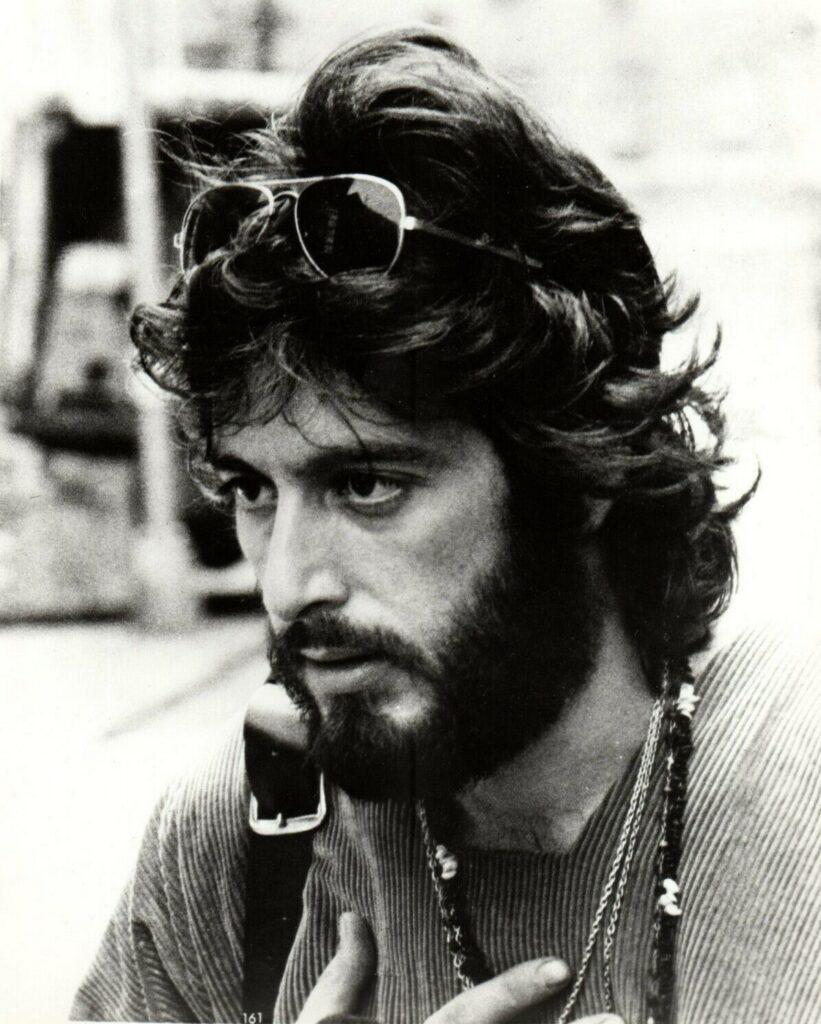
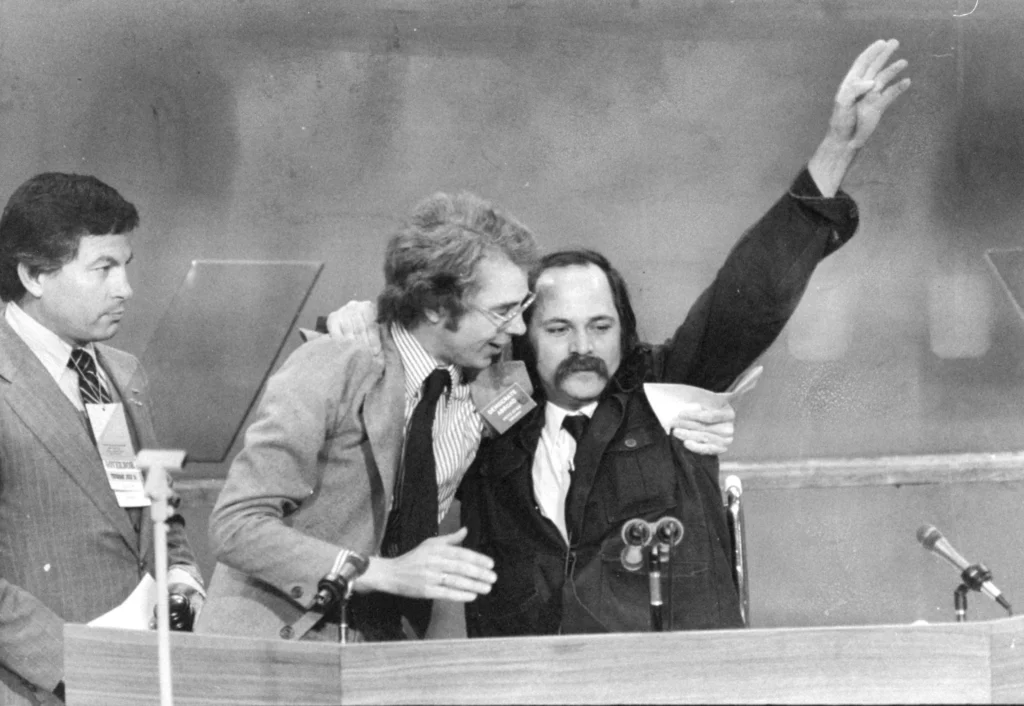
Even Stone would grow tired of all the trouble during pre-production, but promised Kovic that he would one day return to his story, should his career take off. After the release of Platoon, which earned Oscars for Best Picture and Best Director, Stone felt he was ready. The film was announced in April 1987 with Hemdale Film Corporation (the studio that made Platoon) funding. The studio later dropped the film as the budget increased. It should be noted that Stone was also making the film Wall Street as this was all occurring. The chairman of Universal read the script and agreed to finance the film on the condition that a star play the major role. Enter Tom Cruise. Others considered for the part include Charlie Sheen, Sean Penn, and Nicolas Cage. Paula Wagner, Cruise’s then agent and future producing partner showed Cruise Platoon, which made Cruise eager to work with Stone. The studio was wary of Cruise as a dramatic lead and Stone even dismissed Top Gun as “fascist.” However, Stone was intrigued by Cruise’s golden boy image and thought about what would happen if he lost it all. With that, Cruise was officially cast.
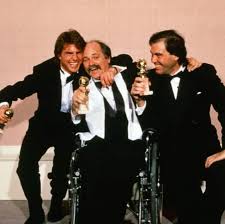
Cruise (who was born on July 3rd), spent a year preparing for the role of Kovic. He visited several veterans’ hospitals, read various books on the Vietnam War, and practiced riding in a wheelchair. At one point during production, Stone went so far as to suggest Cruise be injected with a drug that would render him paralyzed for two days. This would allow him to truly feel what it would be like to be paralyzed. Luckily, the film’s insurance put a kabbash on that. They would have shit themselves if they had become responsible for Tom Cruise becoming permanently paralyzed. Though Cruise would prepare for the role by any means necessary, I think he would have the common sense to have not gone through with it either. Cruise and Kovic became good friends while working on the film. Kovic went so far as to give Cruise his Bronze Star Medal as a gift upon completion of reshoots, a sign of his dedication to the role.
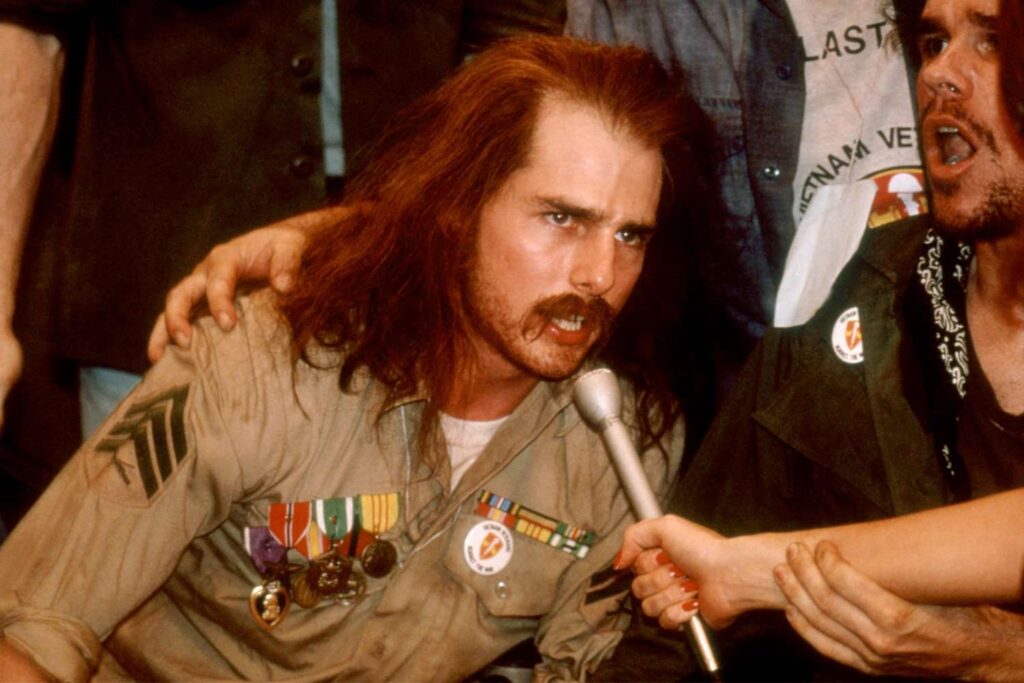
The film had a limited rollout in late 1989 before going wide in early 1990. The film was widely praised, earning eight Academy Award nominations including one for Tom Cruise as Best Actor. Cruise won the Golden Globe for Best Actor in a Motion Picture (Drama) and was thought to be the frontrunner to win the Oscar. However, a late-in-the-year release changed everything. My Left Foot is about the artist Christy Brown, who was born with Cerebral palsy and only had control of his left foot. The star of that film, Mr. Daniel Day-Lewis, proved to be a threat. My theory is that the film was released just in time to barely qualify for the Golden Globes. It only got in for Best Actor (Drama) and Supporting Actress. By the time Academy voting opened, voters had more time to watch the film. As a result, the film overperformed compared to other ceremonies. In addition to Actor and Supporting Actress, the film also got into Best Picture, Director, and Adapted Screenplay.
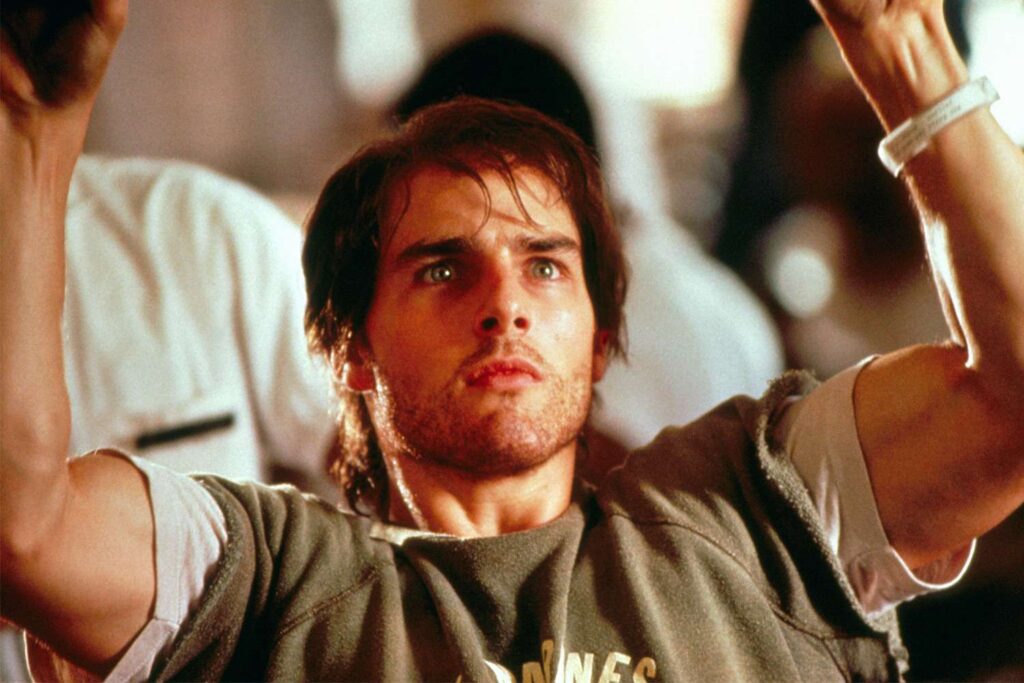
Ultimately, Day-Lewis would take home his first Academy Award, in what I imagine would be a close race. Day-Lewis would become the first male actor to win three Academy Awards for Best Leading Actor for his subsequent wins in There Will Be Blood (2007) and Lincoln (2012). Best Picture that year would be controversially awarded to Driving Miss Daisy, a film Billy Crystal jokes “directed itself,” (referencing the fact that film’s director was not nominated). Despite the loss of Best Picture and Best Actor, the film didn’t go home empty-handed. Oliver Stone won his second Oscar for Best Director and the film won for Best Film Editing. Cruise’s name may not have been in the envelope in 1990, but the commercial success and critical acclaim he began to experience in the 80s would lead to a killer decade.
